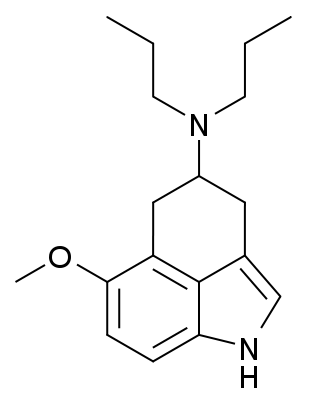I don't really dive much into the papers, and when I do I rarely organize them in such a thorough way as you. But off the top of my head, to back-up my claim I can cite
pihkal's entry for Methyl-DOB (See extensions and commentary), or
this paper that shows how all N-alkyl substitutions of 2C-B show decreased affinity for 5 HT2A R.
Thanks for the paper

Yeah, I am aware of Shulgin's page on N-methyl-DOB. I don't find it particularly convincing of anything. He didn't even go up to ten times the dose of the parent drug, and that's probably because it was too physical because it was based on DOB of all things. Why not try it with 2C-B instead, which you can take like twenty doses of and still live? Plus, this just goes back to what I said before: I haven't seen any particular reason to expect single methyl tails to produce worthwhile psychedelics anyway. It's not like NMT, 4-HO-NMT, or 5-MeO-NMT have ever proven themselves to be worthwhile.
That paper is pretty interesting and I'm glad to have it, though since it's just binding data it doesn't really prove or disprove anything. It has N-methyl-2C-B, N,N-dimethyl-2C-B, and N-ethyl-2C-B all having reduced 5-HT2A potency compared to 2C-B, but just standing on their own they do have considerable potency still, and if they turned out to still be safe up to active doses I would gladly take them. Potency has never been the real issue with drugs, all that matters is what it does when you do find the right dose. And the propyl idea was in the hopes of adding 5-HT1A selectivity, so who knows, maybe the 5-HT2A activity drops more than that and actually contributes to what we want?
Oh, I was talking specifically about phenethylamines in my whole post, since the last molecule to the right in the image you posted was a N,N-Dipropyl 2C-B type compound. I'm sorry I wasn't clear about that. I guess "shittier" it's still subjective though, maybe I should have said "less popular". MDMA is generally prefered to MDEA, Methylone is a favorite whereas Ethylone is hit or miss, amphetamines are nice but ethamphetamine never really was a thing, and N-substituted psychedelic PEAS seem to be less potent according to Shulgin and that paper. There seems to be a trend with messing with the ethyl-amine chain of PEAS. Only N-Benzyl substitutions seem to enhance potency, but at the cost of full agonism and apparently toxic compounds.
And yes, with tryptamines N-substitution is a whole different story, I agree !
Well, that is good wisdom, but it's stimulant and empathogen wisdom. I can't count Shulgin's account or that paper, that PiHKAL entry barely tried at all and didn't use the best base to begin with, and again that paper contained nothing but binding data, it says nothing at all about what the drugs are like. I can accept your other examples still that just compare the subjective effects of MDMA and amphetamine to their derivatives, but those relationships have nothing to do with psychedelics.
The thing is, you can say that tryptamines are a whole different story, but I don't think they actually are. These psychedelics are all binding to the same receptors and therefore it wouldn't be crazy for them to show structure-activity overlaps. And they wouldn't be expected to react the exact same way to the same changes, even just sort of similarly is enough. That's why I find these overlaps between the structures and receptor bindings of tryptamines, phenethylamines, lysergamides, and aminotetralins so fascinating. I think there's very clearly a relationship there personally, but one that will probably still take quite some time to be more deeply explored and appreciated in its full value.
In any case, I'd definitely at least be excited to work my way up with N,N-dipropyl-2C-B if it came my way! Actually I really hope to some day.









